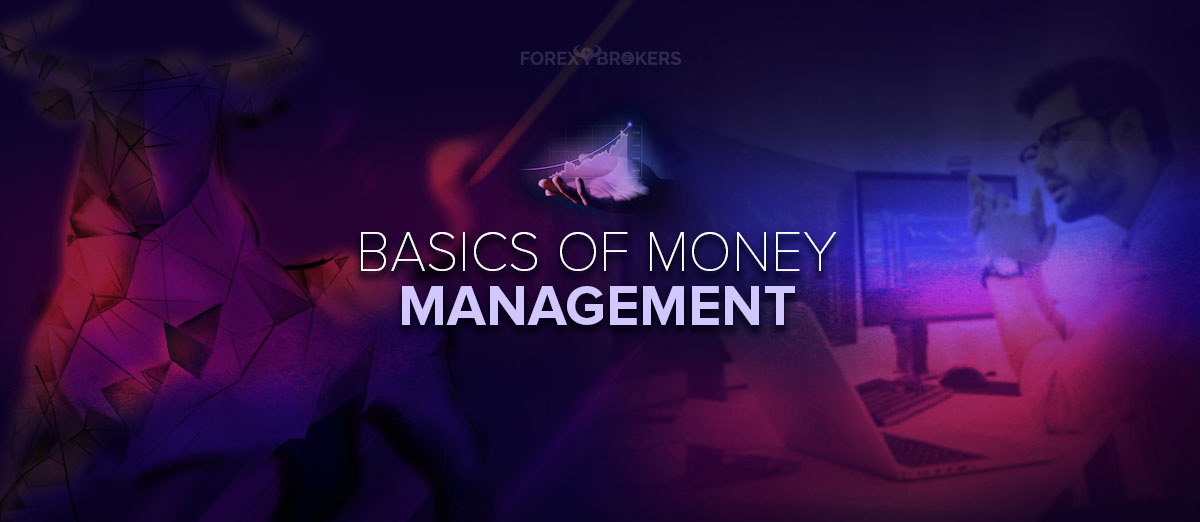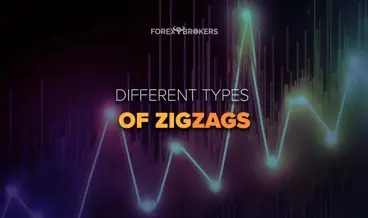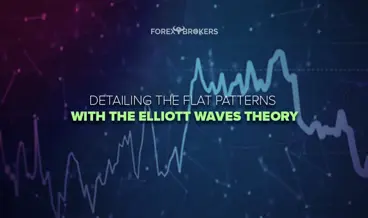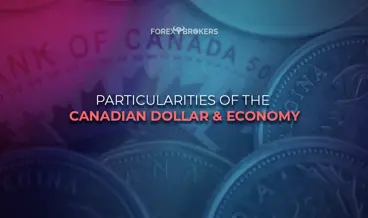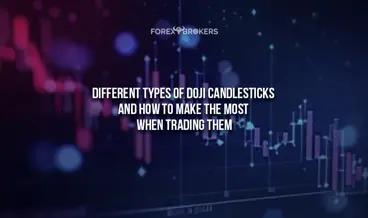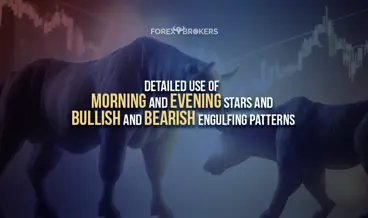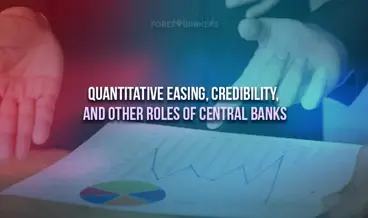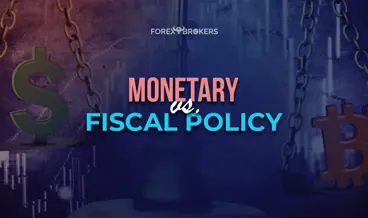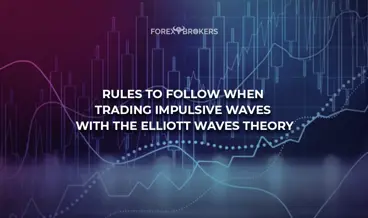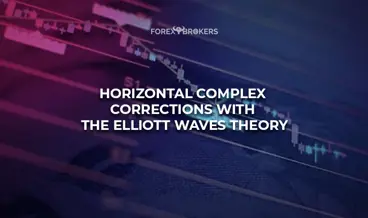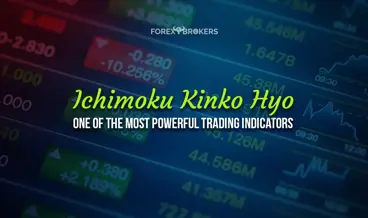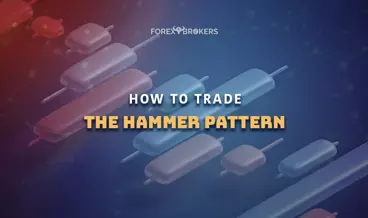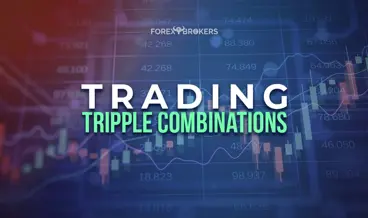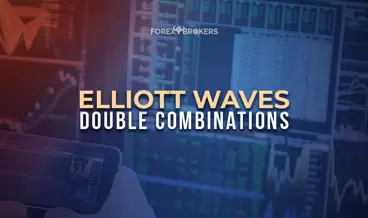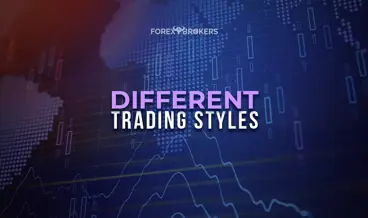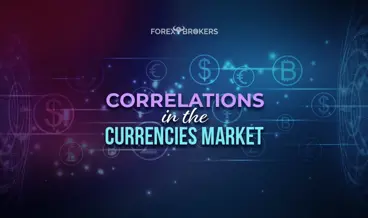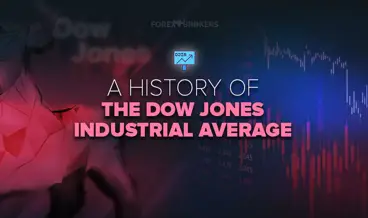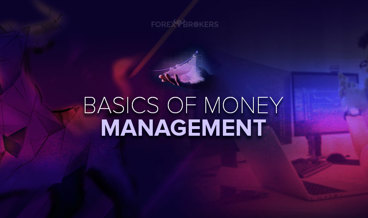Electronic communication has made it possible for retail traders to have cheaper access to financial markets. Once online trading gained traction, brokerage houses adjusted their offer due to stiff competition. As a result, more and more retail accounts started to participate in financial markets.
Being involved in financial markets means staying on constant alert. Things that do not seem to have a connection with the market you trade may create unexpected volatility.
Nowadays, from a trading account opened with a currency broker, a trader can access various markets. Some strategies, especially technical ones, work on many markets without making significant adjustments. This comes from having sound money management in place.
Traders and investors come to financial markets with different expectations. Some want to earn a second income to complement their regular income stream. Others want only capital preservation. And so on.
There is one thing, though, that no trader or investor wants. That is to lose the capital invested.
However, there is no trade without risk nor investment without risk. Risk is part of life, and people take risks from the early stages of life. The way we manage risk defines the success we have. The same is valid in trading.
This article introduces the notion of money management when trading financial markets. It is only the first in a series of articles dedicated to risk when investing and trading. Later in the trading academy, we will also cover market psychology concepts and what it means to trade for a living. Both have a strong connection with how traders approach risk.
This article will introduce you to the notion of money management, but also to some simple strategies every trader must know and apply.
What Is Risk Management?
Risk management is the first thing that a trader/investor should consider before anything else. If you ask a person on the street if he/she is risk averse or not, the answer will most likely be negative. How come?
The reason is that people do not normally know or understand the definition of risk adversity. Being a risk-averse person does not mean that one does not like investing. It only means that one has a certain degree of risk he/she is willing to take. Risk-averse people are the regular investors you see in the stock, bond, or currency market. In fact, they are investors in any market.
As the name suggests, risk management deals with the way we define and deal with risk—also, the way we prepare for unexpected situations. More precisely, imagine yourself as a trader/investor answering the following question – what do I stand to lose if this or that should happen? If the answer to this question does not bother you, then the risk is worth taking.
But risk management does not stop here. While the term risk management implies only a consideration of the risk involved, reality begs to differ. Risk management is also about the reward. More exactly, what do I stand to win if I am willing to take this risk?
Therefore, risk management is a balancing act between the risk and the reward of a trade or investment. In fact, if we consider all the things that we do in life, risk management defines every decision we take at any point in time.
There is always a risk in something. There is even the concept of the “risk of doing nothing.” So can traders and investors completely eliminate risk?

Is It Possible to Eliminate Risk Completely?
You probably guessed it by now. The answer is a sound no. There is risk in everything we do in life, and that is especially true in trading.
The aim when trading or investing is to control the downside, or protect from unexpected events. Depending on the market to trade, there are various types of downside protection. Protecting the downside means having a drawdown rate as low as possible. So, what is the standard definition for an appropriate drawdown?
The right answer is that it isn’t possible to eliminate risk completely. However, most traders or investors would agree that when a trading account or a portfolio’s value drops below half of the original value, the strategy has a problem.
But this depends a lot on the market traded and the time horizon/type of trader/investors. For instance, a stock market investor that wants to build a portfolio over the years may welcome a 50% decline in some of the assets in the portfolio and use it as an opportunity to add to the initial position. However, this is not something that holds when trading the currency market.
The FX market moves too fast and too aggressively to give one the peace of mind of seeing the account dropping 50% and still being ok with that. When trading stocks, this is different because if a company has already lost half of its value by the time you want to buy some more, the most you can lose is merely the distance to the zero level.
In sharp contrast, the FX market’s downside is not limited. Therefore, risk management when trading currencies differs from risk management when trading equities. Also, the time horizon makes traders have a different perspective about managing risk than stock market traders do.

Money Management Strategies to Consider in Trading
Making a profit is the ultimate goal when investing or speculating. To do that, it is not only about buying or selling, but all the factors that facilitate trading.
Liquidity, for instance, is one important factor that enables trading of large volumes. The FX market is the largest market in the world, and because of that, buyers and sellers can literally trade large volumes without damaging the prices.
In smaller markets, trading big is not possible without distorting the prices. For example, imagine the stock market and think of any particular stock that comes to mind. In a bearish trend, the market’s velocity increases, and traders that bought shares on margin are receiving margin calls from their brokers. If they cannot come up with additional funds in due time, the broker will sell the shares. The selling will put further pressure on the share price, fueling the downward move.
In the FX market, the increased liquidity levels make it impossible for market squeezes to survive for long. It could be that at some points in time, especially on Friday afternoons or during a bank holiday, the liquidity will shrink a bit, but it will be back to normal on the next regular business day.
Liquidity, therefore, is the ability to sell or buy in large volumes without affecting the price. High liquidity levels also lead to improved execution, as it reduces slippage to the extent that it doesn’t represent an additional trading cost for swing traders or investors – only scalpers may want to consider it, depending on the profit they aim for with each trade.

Plan for the Week Ahead
Everything starts with planning. Businesses budget their expenses and revenues for the year ahead, just like governments do. So must the trader.
Depending on the trading style, planning differs. For instance, scalpers mainly involved in automated trading will look at different events in the week ahead than, say, swing traders. Or, if they look at the same events, they do so for different reasons.
We know that scalpers are very short-term oriented traders. They go in and out of a market, manually or automatically, thriving in volatile environments. This is one of the key reasons why scalpers love the currency market – its volatility helps. However, too much volatility comes to the detriment of many scalping strategies. Nowadays, most retail traders use ECN (Electronic Communication Network) accounts, meaning that the slippage increases during important economic events.
Effectively, it means that the broker will have problems filling the orders accurately. As such, scalpers will want to plan for the week ahead by avoiding or reducing the regular exposure during volatile economic events, like a central bank’s decision, Non-Farm Payrolls (NFP), and so on.
Swing traders, on the other hand, use important events to scale into a position. Or, to find stretched market levels and enter with the intention of getting better entries and keeping the position open for a medium term.
Therefore, both types of trading styles benefit from planning, but traders use it with a different purpose in mind. Planning involves not only preparation for market events but also for the way to execute trading.
As an example, consider that it is the weekend and the NFP week is due. Typically during the NFP week, the market remains in ranges until the Friday event. Therefore, scalpers will use overbought and oversold areas shown by oscillators, while swing traders will open trades with the intention of keeping them open during and after the NFP.
Plan for the Worse, Aim for the Best
Trading needs realistic targets. Sure, one can double an account in thirty trading days, but in the long run, this is not sustainable. Instead, it is due to luck and overly risking the trading account.
It is paramount to find what works for you in terms of risk and return. This means finding a risk level to be comfortable with. This is key in planning.
Any trading week is full of opportunities. However, it depends on the trading style, strategy, and expectations. For instance, not many traders use the period during the December holidays to trade the currency market. More precisely, not many professional traders, because this is the time of the year when the market slows down due to lack of activity and few market participants being active.
But retail traders may find an edge in trading tight and very tight ranges. Also, they may find levels valuable for a medium to long-term perspective. If one is bearish on the EURUSD and thinks that the longer timeframes and the fundamental aspects favor a move to 1.10 and the current market is 1.21, then starting the trading process during such times makes sense, as it is part of a longer-term plan – it has nothing to do with the holidays.
The aim of any given trading week should be not to lose money. Yet, this is an increasingly difficult task due to the Forex market’s complexity. Therefore, aim for the best achievable and do not forget the power of compounding. Effectively, it means reinvesting the small winnings, and over time the compounding results in outsized trading account performance.
Avoid Large Drawdowns
All traders are aware of the importance of money management. That is, the importance of avoiding risk as much as possible.
Unfortunately, from the moment the trader opens a position, a risk exists. Plus, there is an extremely fine balance between risk and reward. It is exceedingly difficult to achieve high profits with little risk. Therefore, traders obsessed with risking very little will be disappointed to find out that the likelihood of making a lot decreases proportionately. We will cover all these aspects a bit later in this article.
For now, we need to express ways to measure the risk. How do we know if a trading strategy is risky or not? Or how do we compare two strategies in terms of their riskiness? If you want, what is the risk of ruin? Remember – plan for the worst (ruin), but aim for the best (growing your account).
A drawdown is a great way to minimize the risk of ruin. Avoiding large drawdowns is key and one of the pillars of money management. This is valid not only for the currency traders, but for all traders of all markets.
Drawdown refers to the decline in value generated by the open positions. Please make sure you understand this simple but very important concept. It does not refer to the closing positions – those closed with a loss are just that – losses.
Instead, drawdown refers to the market moving against the desired direction, and the ongoing decline in equity affects the account’s ability to open new trades. But what is an acceptable drawdown in the retail FX market?
Acceptable and Unacceptable Drawdowns
Anything less than 30% drawdown is considered acceptable. That is not to say that trading accounts or strategies with bigger drawdown are to be ignored completely. A study must reveal that the drawdown was temporary or due to an exogenous effect (e.g., gap, broker circumstance, a one-time event of any kind).
We can view the drawdown issues through the eyes of the fixed-income market. Here we have IG (Investment Grade) bonds but also junk bonds. IG bonds offer a lower yield because they are considered risk-free. In sharp contrast, junk bonds offer a higher yield, because they are considered riskier.
This is the same in FX trading. When comparing two trading accounts or strategies through the eyes of their drawdown, the one with the smaller drawdown will almost always perform less than the one with a higher drawdown.
Therefore, the key is to find the right balance between the acceptable drawdown and the potential risk. For instance, a trading strategy with a 30% maximum drawdown in the last five years that generated a 200% return may be less appealing to some investors than a trading strategy with 45% maximum drawdown in the last five years that generated a 400% return.
As such, one must define what an acceptable drawdown is and always consider the opportunity cost. That is, the opportunity lost by not investing in the trading account while allowing for a considerable drawdown.
How to Avoid Large Drawdowns?
The first thing to consider is that large drawdowns are not possible with short-term trading strategies. If the account shrinks, it is because of the closed, losing positions, not because of the drawdown. A drawdown, therefore, applies to swing traders and even investors.
The second thing to consider is hedging the trading account either fully or partially. Pure hedging refers to opening a trade on the same currency pair or market but in the opposite direction. However, this goes against most trading strategies and for some brokers and trading platforms it is not allowed (e.g. brokers in the United States and the MT5 trading platform).
But hedging may occur by trading uncorrelated assets. For example, if the account has a EURGBP short position that keeps going against the desired direction and a new setup appears, say, on the crude oil or gold market (remember that both markets are typically accessible from a regular FX account, so traders can use them as well when trading with an FX broker), such a position, if winning, will reduce the drawdown. In this case, it will not hedge but offer diversification benefits by not trading a correlated asset.
Most of the money management tools and strategies are designed to reduce risk, thus to reduce the drawdown. As such, everything below can easily fit into this category.
Use Pending Orders
One very efficient money management rule is to use pending orders as much as possible. Some traders make a rule of never entering a trade at the market, but only with pending orders. While there is a sound reasoning behind this logic, sometimes it leads to missing opportunities due to the market trading fast.
Pending orders, like the name suggests, are orders to enter and exit the market at certain levels. One of the most important aspects of a trading strategy that uses pending orders is the fact that it is based on a plan, on an analysis. If the trader uses pending orders it means that it is wise enough to wait for the market to move before entering. It also means that it allows for better risk-reward ratios, should the order be filled.
There are many types of pending orders and during this trading academy we have covered them all. Here is a quick review:
- Pending buy stop order – buying from higher levels
- Pending sell stop order – selling from lower levels
- Pending buy limit order – buy from lower levels
- Pending sell limit order – sell from higher levels
By waiting for the market to reach the desired entry level, the trader shows character and patience. For example, trading with most of the Japanese candlestick reversal patterns requires waiting for a retracement into the 51%-61.8% area before going short or long. If the candlesticks represent periods on the daily chart, the market may need some time to reach that area. Therefore, placing a pending order makes sense and releases the trader from the stress of monitoring the market.
These are not the only pending orders to use. The most popular ones are the stop-loss and take-profit orders, the ones that are responsible for getting you out of a position. So far, the pending orders mentioned referred to getting a trader into a position, but the stop-loss and take-profit are equally important.
In fact, they are more difficult to use than the entry pending orders. Let’s discuss that in the paragraph below.
Keep the Stop-Loss Order In Place No Matter What
Both stop-loss and take-profit orders are important. However, of the two, the stop-loss is critical and should never be widened. Depending on the trading strategy and the performance at any one point, traders may alter the stop-loss order. For instance, some strategies may require quickly adjusting the stop-loss by tightening it the moment that the market moves in the trader’s favor.
Doing the same but the other way around is both risky and unproductive. By removing the stop or widening it, the trader gives up the most important asset in any strategy – the planning aspect. More precisely, the trader gives up the entire money management system and replaces it with the “hope” that the market reverses. It may reverse once or a few times, but hope will not get you far in trading. Instead, being calm, precise, and executing the trading plan accordingly will do that.
Risking Only a Percentage of The Trading Account
One of the greatest money management techniques is to risk only a certain percentage of the trading account on any given trade. Two approaches exist here – one aggressive and one conservative.
The aggressive approach means that the trader risks 2% of the trading account on any given trade, while the conservative approach means that only 1% of the trading account is risked on any given trade.
Let’s consider the conservative approach. If we do the math, by risking only 1% of the trading account and by losing seventy-two consecutive trades, the account drops to half of the original value. One the other hand, if the trader manages to lose with such incredible consistency, then maybe trading is not something to pursue further.
To find the right volume to trade, the trader first needs to decide the level at which to place the stop loss order. Next, the trader must transform the distance in pips in the right volume to trade so that if the market reaches the stop-loss value, the account only loses 1%.
Risk Only Up To a Certain Margin Level
A similar approach to the one mentioned above is to use the margin in the trading account as a key element for the risk management strategy. This way, instead of referring to the equity as the base for the risk management, the trader’s focus shifts to the margin level.
For example, one sets the basis of the money management strategy to never exceed a 30% level of the margin blocked in open trades. The margin level is influenced by the amount the broker requires for any given trade and the trades’ performance. When the trades outperform, the margin level decreases; when they underperform, the margin level increases.
Focus on the Equity and Not the Balance
This is a crucial concept of any money management strategy. The equity of a trading account shows the real performance and not the balance. For instance, consider that the trading activity during the first trading month leads to a profit of $100 on a $2,000 initial deposit. More precisely, 5%.
Now let’s assume that next month the trader opens new trades using a swing trading strategy. Such trades need more time to unfold. Therefore, it may be that at some point in time the account has a drawdown of 20% without reaching the stop-loss orders. At that point, the balance will still show $2,000, but the reality is provided by the equity, $1,600. Understanding the difference between the two is critical to executing the money management strategy.
Account for All the Costs Involved
Money management does not end with setting up a trade. Instead, money management ends only after all the costs related to trading are accounted for.
Consider all the costs involved. Swaps, commissions, spreads, fees for depositing/withdrawing funds, taxes on capital gains, etc. All elements are an integral part of a sound money management strategy as they heavily influence the bottom line.
Risk-Reward Ratios to Consider When Trading
The higher the risk-reward ratio, the better. Such a ratio considers the reward in relation to the risk of a trade. Remember the 1% rule mentioned earlier in the article? That is the risk for any given trade. The reward must exceed twice the risk. In other words, on a risk of 1%, the trader must set the reward at 2%.
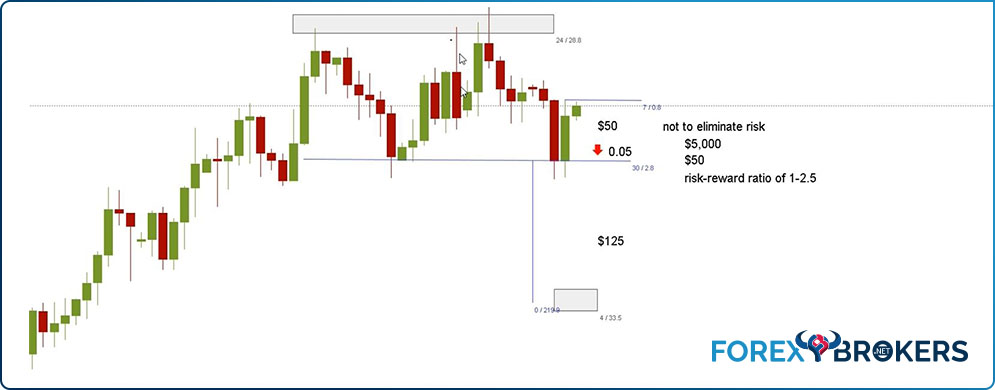
This is the minimum acceptable risk-reward ratio. Also called the rr ratio, the 1:2 greatly helps traders navigating through the imminent losing trades. For instance, with a rr ratio of 1:2, the trader may lose two trades and win only one and still break even. Imagine a 1:2.5, 1:3 or even 1:5. As mentioned earlier, the higher the ratio, the better.
One of the greatest hurdles of using risk-reward ratios is sticking to the plan. The temptation to close the trades and take the profit by the time the trade advances in your favor often prevails. Discipline in executing the trading plan is key and it usually comes with experience.
Another thing that affects traders’ ability to use risk-reward ratios is the high volatility in the market. That is especially true when using lower timeframes as the setup for a trade.
Move the Stop-Loss to Break-Even and Book Half Profits
One conservative approach that uses risk-reward ratios is to alter the initial strategy in such a way that it protects the account even more from unwanted drawdowns. Many conservative traders use the initial risk-reward ratio of 1:2 as the setup of the trade and then then engage in actively managing the trade.
More precisely, by the time the trade goes in the right direction and reaches 1:1, the trader intervenes and moves the stop to break-even. Let’s assume a long trade on the EURUSD pair, from 1.20 with a risk of 100 pips. For a risk-reward ratio of 1:2, the reward or the take-profit level should be set at 200 pips or 1.22. By the time the market advances and reaches 1.21, traders raise the stop from the initial 1.19 to 1.20. This way, in the eventuality that the market reverses back to 1.20, the account does not suffer any loss because the position will be closed at break-even.
The positive of this approach is that it protects the account from drawdowns. Also, if the market is able to come back from 1:1 to the initial entry point, perhaps the trading setup was not that good in the first place.
The negative is that by actively managing a position, the trader intervenes and often ruins the risk-reward ratio. Any calculation based on the risk-reward ratio as the core part of the money management strategy is blown away.
Trail the Stop-Loss
Some traders do not stop at raising the stop to break-even but continue to actively manage the trade by moving the stop with the market. Consider the example from the previous section. If the EURUSD reached 1.21, the trader may decide to book some paper profits by raising the stop to 1.2050. This way, 50 pips are protected as a sure profit. Let’s say that the market advances to 1.2120. At this point, the trader may decide to further raise the stop to 1.2070.
This is called “trailing the stop” and it continues until either the trade reaches the take profit or the market turns and reaches the stop. In both cases, the trader makes a profit.
Again, the downside of this strategy is that the volatile nature of the FX market results in the price turning, reaching the trailed stop, and then reversing and reaching the initial target. Yet, the upside is that the trader ends up making a profit, no matter what.
Scale Into a Position
A great way to manage the risk of a trade is to find the right entry. This approach is particularly used by traders that buy or sell in large volumes. Consider that based on the size of the trading account and the risk involved, your volume for a new trade is one full lot.
At this point, you have two choices. One is to open a trade using the entire volume of one lot. Another is to “scale” into a position. That is, to divide the entry into multiple, smaller trades, say, four smaller ones, each with 0.25 as the volume.
The upside of this approach is that it offers a better average if the market moves against the initial entry point. The downside is that it often leads to not deploying the entire volume at the wanted level, and thus the account remains underinvested.
Avoid Correlated Trades
Correlations have a huge impact on the performance of a trading account. Traders often think they trade different markets when, in fact, they trade the same one. For example, when buying the USDCAD pair, traders mostly trade the oil market, as the CAD and the price of oil are directly correlated.
Or, when the market moves in a risk-on environment, the USD is the central theme of the move. In other words, AUDUSD, EURUSD, NZDUSD, GBPUSD will all move to the upside in a correlated manner. Therefore, taking a position in all of the pairs means quadrupling the risk on the initial trade.
Check out our video about the Basics of money management:
Conclusion
Money management is crucial to success in trading. Even if the trader discovers a profitable strategy, execution is key.
This article introduces the reader to basic concepts of money management. Further down the road, this trading academy will cover other concepts such as trading for a living or trading psychology and how it affects the profitability of a trading account.
All the strategies mentioned in this article are part of risk management. Depending on the type of the trading strategy (i.e., swing trading, scalping, investing), the trader’s personality, and so on, some strategies are suitable for a trading account, and some are not.
However, at any one point in a trader’s career, the trader is likely to have used all of the strategies at least once. Knowing them all means knowing how to deal with the uncertainty in trading and helps in navigating the volatility in the FX market.
